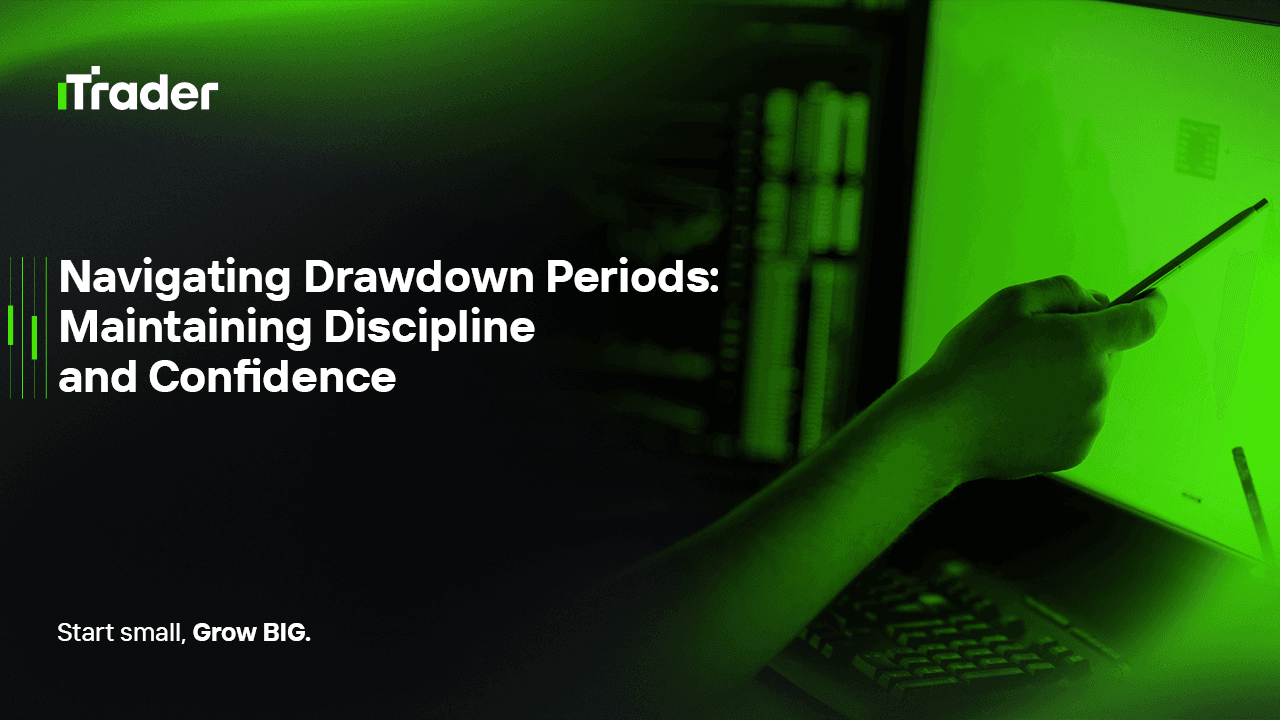2025-08-04
Forex trading is not merely a technical or strategic exercise—it is a deep psychological endeavor. While developing a profitable system is crucial, a trader’s long-term success ultimately depends on how well they manage their mental resilience during adverse periods. Among these, drawdowns are particularly challenging, especially for prop traders working under evaluation, pressure, and strict risk limits.

In this blog, we’ll explore the emotional structure behind drawdowns and provide a detailed roadmap on how professional traders can maintain discipline and confidence even when facing consecutive losses or underperformance.
A drawdown is the decline in account equity from a peak to a trough. It represents the temporary loss in value due to a sequence of losing trades. While mathematically it is just a number, psychologically it carries significant weight.
Drawdowns manifest in two major dimensions:
A drawdown is inevitable in any robust strategy. What varies is how traders respond to it.
During a drawdown, traders often go through five psychological stages:
Each stage poses a decision-making risk. Discipline and belief are what keep traders grounded and systematic throughout this cycle.
Discipline is the ability to follow predefined rules and logic-based actions, even under stress.
Discipline is about responding based on criteria, not emotion. A well-crafted protocol turns panic into controlled responses.
Discipline is the foundation of consistent performance. During drawdowns, it's what separates professionals from gamblers.
Staying confident in your system—even when it underperforms—is a sign of maturity in trading psychology.
A robust performance review framework helps separate natural drawdowns from systemic failure.
Keeping a journal is especially valuable during drawdowns. It reveals behavioral patterns and strategy weaknesses.
Include:
This creates a feedback loop that improves both your system and your psychology.
Prop traders face additional pressure during drawdowns:
To manage these risks:
In prop trading, drawdowns are not just technical declines—they are emotional storms. To navigate them successfully:
Success is not defined by how well a strategy performs at its peak, but by how committed you remain when it underperforms. True trading mastery comes when you can follow your plan—not just during the highs, but more importantly, through the inevitable lows.
© 2025 iTrader Global Limited | 公司注册号 15962
iTrader Global Limited 位于科摩罗联盟安儒昂自治岛穆察姆杜 Hamchako,并受科摩罗证券委员会(Securities Commission of the Comoros)许可及监管。我们的牌照号为 L15962/ITGL。
iTrader Global Limited 以“iTrader”作为交易名称,获授权从事外汇交易业务。公司的标志、商标及网站均为 iTrader Global Limited 的专属财产。
风险提示: 差价合约(CFD)交易因杠杆作用存在高风险,可能导致资金快速亏损,并非适合所有投资者。
交易资金、差价合约及其他高杠杆产品需要具备专业知识。
研究显示,84.01% 使用杠杆的交易者会遭受亏损。请务必充分了解相关风险,并确认在交易前已做好承担资金损失的准备。
iTrader 特此声明,不会对任何个人或法人在杠杆交易中产生的风险、亏损或其他损失承担全部责任。
本网站提供的新闻及信息仅用于教育目的。用户应独立且审慎地作出金融决策。
限制条款: iTrader 不会向法律、法规或政策禁止此类活动的国家或地区居民提供本网站或相关服务。若您居住在限制使用本网站或服务的司法管辖区,您有责任确保遵守当地法律。iTrader 不保证其网站内容在所有司法管辖区均适用或合法。
iTrader Global Limited 不向以下国家/地区的公民提供服务,包括但不限于:美国、巴西、加拿大、以色列及伊朗。